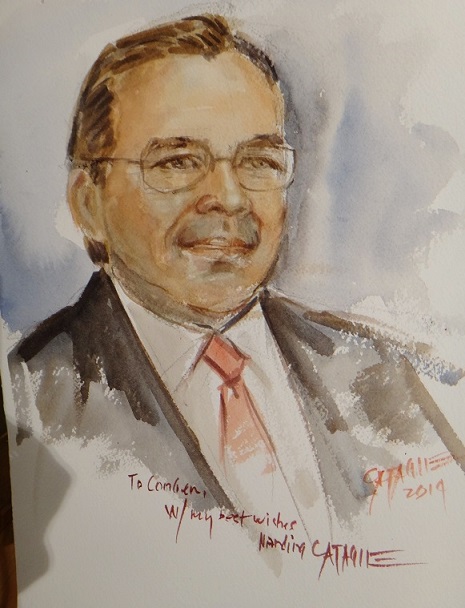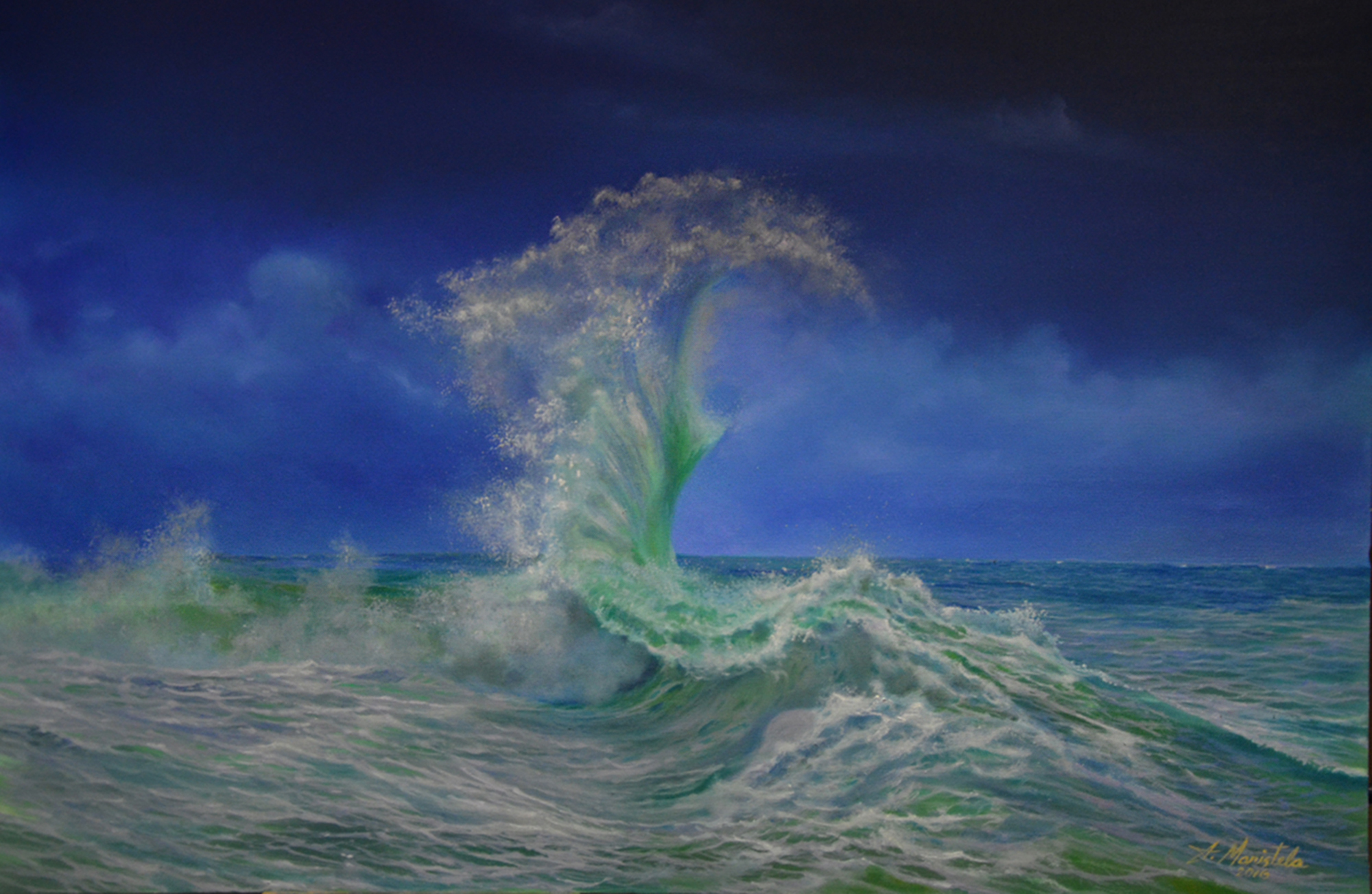‘Noah:’ A flood of details never mentioned in the Bible
By Wendell Gaa
Hollywood has capitalized on the recent resurgence of public interest in biblical tales, which is evident in the newly released film “Noah,” starring Russell Crowe and directed by the brilliant Darren Aronofsky.
However an eccentric and sometimes unorthodox take of the classic Old Testament story it is, “Noah” is one of the most visually awe-inspiring movies of the decade yet, and such spectacle is largely the work of the film’s cinematographer, Matthew Libatique, a FilAm from Elmhurst, Queens.
Libatique, 45, is the son of Philippine immigrants. He attended school at California State University Fullerton where he studied communications and sociology, before attending the American Film Institute (AFI) Conservatory where he earned a Master of Fine Arts (MFA) degree.
In such a relatively short career, Libatique has already consolidated quite a fine resume in filmmaking. He worked as a cinematographer with Aronofsky on such films as “The Fountain,” “Requiem for a Dream,” and “Black Swan,” for which he earned an Oscar nomination for Best Cinematographer and won an Independent Spirit award. He has also collaborated with other notable film directors such as Spike Lee (“Inside Man” starring Denzel Washington) and Joel Schumacher (“The Number 23” with Jim Carrey).
Marvel superhero film fans can take pride in knowing that he has also lent his cinematographic work to “Iron Man” and “Iron Man 2,” both of which were directed by Jon Favreau. Among other cinematography prizes he has bagged have been the New York Film Critics Online, San Francisco Film Critics and the Los Angeles Film Critics Association awards.
“Noah” as a film is unlike any other biblical piece which I’ve ever seen. We are all familiar with the story of how God in His deep frustration with the wickedness of mankind after the fall of Adam and Eve at the Garden of Eden, decides to make a clean slate of the earth by sending a great flood to literally wipe out all humanity and life, save for Noah and his family, who are all righteous and worthy in the eyes of the Lord. After Noah receives a spiritual message from the Creator, the events which follow are among the most well-known in history. He is commanded to construct a humongous vessel which will shield him and his family from the oncoming flood, and compelled by God Himself, hundreds of animals in pairs representing every known species on the planet flock into the ark so that they may also be spared to live and multiply in the new post-flood world.
It is interesting that the story of Noah’s Ark can be found in only a few chapters in Genesis. Yet Aronofsky goes to great lengths to expand the story to previously uncharted waters (no pun intended), and for the most part he succeeds. Now you are all probably well aware of the controversy which the film has generated, particularly amongst church and religious groups. Much of this stems from the fact that a few characters and events depicted in the film are not at all mentioned in Genesis.
The film opens with a scene of a young Noah with his father Lamech showing him the shed skin of the original serpent in the Garden of Eden. Soon though Lamech is killed by a young king named Tubal-cain, a descendent of Adam and Even’s son Cain, who takes the serpent skin for himself, and Noah, after witnessing his father’s murder, is thereby forced to hide and flee into safety. Years later, Noah becomes a simple-living man with a wife named Naameh (played by Jennifer Connelly, who starred alongside Crowe in the Oscar winning “A Beautiful Mind”) and three sons, Shem, Ham and Japheth. After noting the brutality of mankind on earth, and receiving God’s warning, Noah commits himself to building the ark, enlisting the aid of his family and stone giant creatures called “Watchers” who are actually angels fallen out of the grace of God.
Several years pass before the ark is nearly complete, and Noah’s nemesis Tubal-cain returns with an army to confront him in an attempt to claim the ark and save himself and his men. Noah races against time to save his family and the ship’s creatures, and soon the apocalyptic flood arrives, and the real emotional heart of the film’s story comes from the family’s struggle to endure the global storm, and what purpose they should find within themselves to continue surviving and thriving in the post-flood world.
I could easily discern the aspects of the film which raised the ire of conservative groups, such as the notion of the pre-flood world being divided between the societies of the descendants of Cain and his brother Seth, as well as obviously the presence of the fantasy-inspired “Watchers.”
But viewing it from either a spiritual or pragmatic point of view, just because these particular aspects portrayed in the movie are absent from Genesis, who is to say that certain events in the film did or didn’t happen in actual history? And if you watch the movie with an open mind and take it for what it is, a modern approach to Noah’s story with a touch of Hollywood flavor, there is no doubt you will enjoy it.
The grand movie is complemented by a stellar cast. Crowe gives an exceptional performance as a God-fearing yet very flawed and conflicted Noah. The supporting cast work well with the screen time they are given, including Sir Anthony Hopkins as Noah’s grandfather Methuselah (purported to be the oldest man who ever lived at 969 years old), who being the master British thespian that he is, always exudes gravitas in any role he performs, and Emma Watson as Ila, a young girl who is not mentioned in the Bible, but grows up to become the wife of Shem in this film adaptation. Her strong onscreen presence here actually outshines that of the three sons.
Arguably, however, it is the cinematographic visual spectacle of “Noah” which is the film’s greatest asset, and as impressive as the computer-generated effects of the global flood and the “Watchers” are, it was the magnificent scenery of the mountains and islets of Iceland where the land scenes of the film were shot which left me truly awestruck. It was amusing to watch the film in the cinema while hearing my friend whisper to me how she recognized a number of locations there, having before visited Iceland herself. From the camera shots of the forest greenery, to the open sea, to the black granite beaches and meadows overseen by towering cliffs, Libatique’s cinematic style on “Noah” is indescribably marvelous and the Filipino American community should be proud to have him represent us in the U.S. film industry.













Wow, Wendell, you outdid yourself with this review of NOAH. It made me feel like running to the theatre
and watching the film right away. I felt carried away by your description of the story and somehow I was able
to relate having read many times this part of Genesis in the bible. Congratulations on a well-written review
of Noah. Kudos.
Congratulations also to Our very own Libatique. More power to you both.
Thank you so much! More power to our entire community of course!
Filipino American community should be proud to have him represent us in the U.S. film industry.